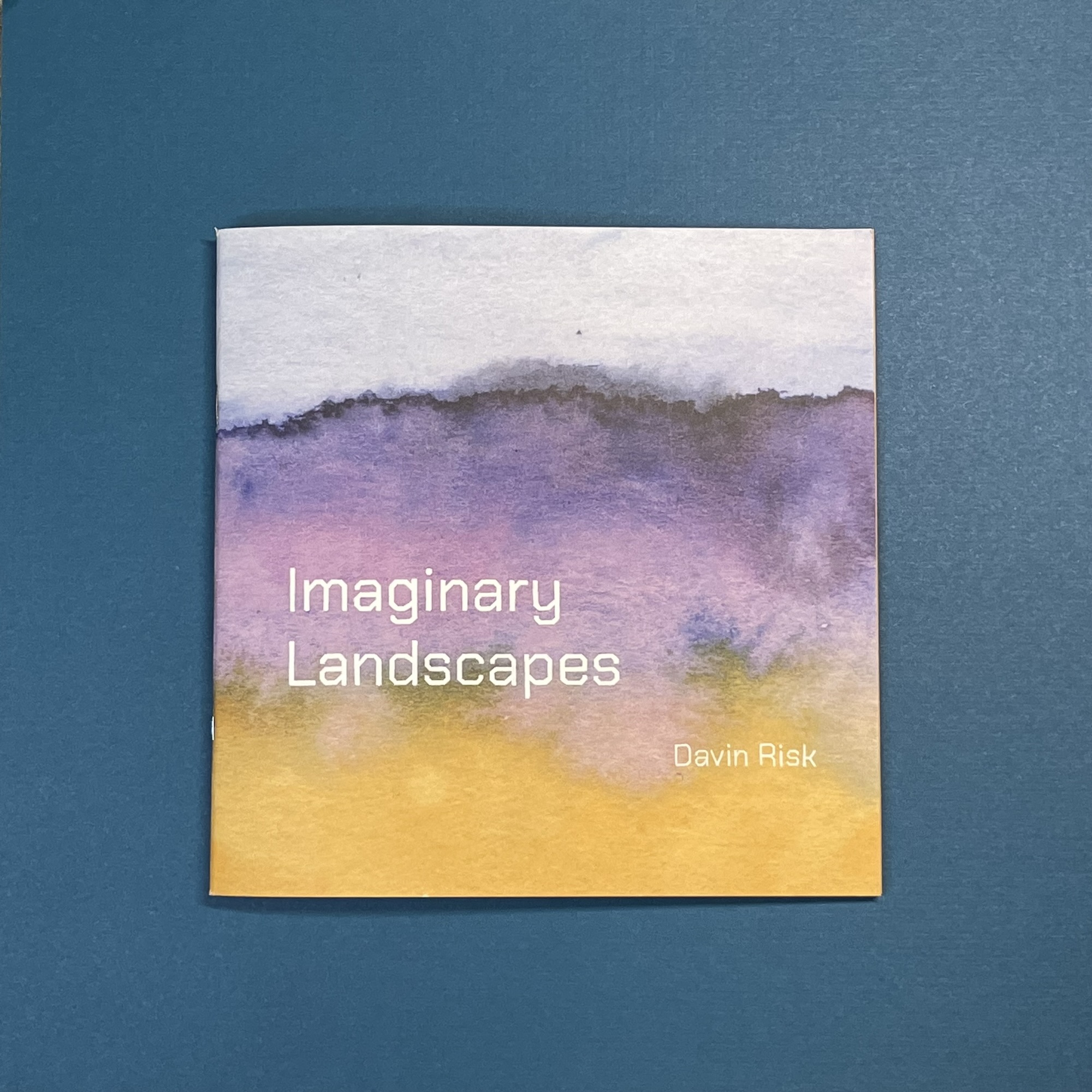I’ve published a new art book!
Imaginary Landscapes is a 7×7″ 32-page artist designed and published compilation of a series of my intuitive abstracted watercolour landscapes.

This book has 34 paintings of natural spaces created purely from imagination and the properties of pigments in water. These small paintings, originally made in 2020 at 3×3″, have been sequenced and set as new complimentary pairs.

Many of the paintings are presented at their original size as I quite love that scale as handheld portals into each of the natural worlds I painted. But part of my interest in pulling them together in this book was to find the connections between the images. Connections of colour, texture, and place.






Some backstory about these images…
In 2020, I made this series of small watercolour landscape paintings, intuitively and softly abstracting representations of places that were entirely imaginary.
When I made these images, it was at a very difficult time in our lives with my partner’s health at a terrible low and our lives in upheaval from eviction.
I worked on these paintings a few at a time, taped to the back of a sketchbook sitting on a small side table at our bedside so I could stay close to partner as she was bed bound.


Last month, I was revisiting the scans I have of those paintings, maybe hoping to bring some of their organic forms and colours into those cold February days.
I only have one of the original paintings left. This imagined crimson-toned flat landscape with a heavy muted sky is a picture of a prairie I have never visited. This painting is taped to the wall beside the door coming out of my home office so I see it often.

I’ve written before about how I can’t form mental imagery, so the process of making these tiny 3×3 inch paintings didn’t involve any specific pictures in my head or any direct or photographic reference.
I put paint and water down and responded, often to the balance between land and sky as it formed on the paper. My response would lead some of the paintings to feel more like loose hints of a natural place — an ambience or an atmosphere.

Other responses became more literal with forest forms, loose but recognizable banks of clouds, and waves and reflection in bodies of water.

While looking through the paintings again, I realized that I wanted to take them further. Other than the single painting on my office wall, the other 47 paintings in this series live in other people’s homes. I sold them all to raise extra funds while we were moving in 2020.
I love to imagine where those images might now be. Some may be framed on walls, some more casually displayed, and some could simply be tucked into books to be revisited occasionally.
I like to think that each person that purchased one of the originals had their own intimate connection to these imagined spaces. I know where they can take me in my memory. Some have specific connections for me and others are just vague but meaningful clusters of memory and emotion.
So, when I thought out loud on the internet in February that these images might make a good zine or chapbook, that thought was borne from not wanting my own sense of these paintings to dim but to also the possibility of sharing them in a new way with more people.
Part of what I like about sharing artwork online is the practice of letting visuals escape a bit and find their way into other people’s lives.
I also have a great love for artist books and artist publishing in general. Books can be artworks on their own but they are also a lovely vehicle for presentation and documentation especially of artworks that are part of a series.

Art books and zines can also have this somewhat democratizing aspect where art becomes more approachable, casual, and literally handheld. Screens can do this too but there is unquestionably something special about having artwork in your hands.
Because I already had the design knowledge from making multiple commercially published books and print knowledge from a variety of personal and client projects over the years it was simple enough for me to approach pulling the watercolour paintings from 2020 into a new form.


I was overjoyed to open the box containing the 20 copies of the book that I had printed through a short run service. The book is printed on heavy and smooth paper and for someone that loves holding a good book in their hands, it feels so good — even a bit luxurious.
I wouldn’t really call this a “zine” in the end. I think that zines can take all sorts of forms and being commercially printed doesn’t cancel out zine-ness. But I think I feel like zines are more expressive of a one-time burst of energy published.
This book is more of a reflection or a re-experiencing of my own work. With physical and temporal distance and changed circumstances, I can see these imagined landscapes again and live in them a bit more calmly.
I’m excited for more people to take a look.
